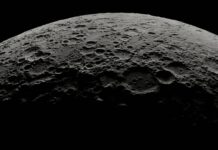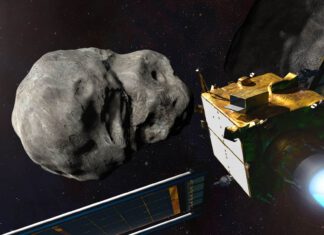
The renowned Perseid meteor shower will soon grace the night sky again, and this year the conditions are even better than average.
Annual Spectacle
Every summer, the Earth moves through the Perseid meteor shower, and this weekend marks the ideal moment to gaze at the sky and enjoy a breathtaking spectacle. The Perseids often provide one of the most beautiful meteor showers, mainly due to their brightness. This year, once again, they can be admired in all their glory.
What Are the Perseids?
The Perseids are named after the constellation Perseus, from which these ‘falling stars’ seem to originate. This constellation is high on the northeastern horizon at night. The meteor shower consists of debris left behind by the comet Swift-Tuttle, which has an orbital period of 133 years. Every year, as Earth moves through this debris cloud, we witness the Perseids around the same time. The meteoroids causing the Perseids are primarily located just outside Earth’s orbit around the sun, leading the Earth through the core of the swarm. Most Perseids are visible towards the end of the night, traveling faster than 200,000 kilometers per hour, known for their brightness and speed, sometimes leaving behind glowing trails.
Peak Viewing Times
The meteor shower peaks on Monday, August 12, around nine in the evening. According to astronomer Marc van der Sluys of the website hemel.waarnemen.com, you can see up to 65 meteors per hour towards the end of the night, between 3 and 4 AM. Since the real maximum falls on Monday evening, almost as many ‘falling stars’ are visible in the night before the peak, from Sunday to Monday.
Optimal Viewing Time
If the radiant of the Perseids were directly overhead, we would see about 85 meteors per hour. The radiant reaches its highest point, 84° above the horizon, around 7:30 AM. The best time to view the Perseids is on August 13 around 3:45 AM, when the radiant is about 60° above the horizon. At that time, approximately 40 to 55 meteors per hour are visible. In total, under a dark, clear sky, you can see around 50 to 65 meteors per hour, including meteors from other showers and sporadic ones. In a dark location, you see about three times as many meteors as in a light-polluted area.
Other Viewing Days
The swarm is visible not only on its peak day. For about 3.1 days around the peak, more than half of the maximum hourly meteors (about 23) can still be seen. Even up to 12 days before and after the maximum, meteors from this swarm remain visible. The peak of the swarm is relatively short, so try to watch a few nights before and after the peak. Note that the number of meteors per hour decreases by about 40 percent each day after the peak.
Favorable Conditions
This year, the Perseids are more visible than average. According to Van der Sluys, this is because the moon is in its First Quarter phase, setting before midnight and thus not interfering for the rest of the night. This is favorable: it means you can see slightly more ‘falling stars’ this year than last year and also have multiple nights to view them.
Most Famous Meteor Shower
The Perseids are probably the most famous meteor shower. This is partly because it is one of the richest showers visible from the northern hemisphere. Additionally, the peak often falls during the summer vacation. Did you know that these meteors were first observed by the Chinese in the year 36, but it wasn’t until 1835 that it became clear it was an annual shower?
Even More Falling Stars
This year, we can again look forward to dozens of light streaks shooting across the sky. If you think 65 meteors is a lot, you might be in luck in a few years. Every twelve years, Jupiter’s gravity influences the orbits of some meteoroids, bringing them into Earth’s path, allowing us to see more meteors. This happened in 2004 when more than 150 meteors per hour were visible. Also, in 2028 and 2040, we might look forward to extra ‘falling stars’.
For now, let’s enjoy the spectacular show this coming weekend. Planning to watch? No special equipment is needed to observe the meteors. They are visible to the naked eye from a clear, preferably dark location. In areas with lots of light pollution, only about a third of the maximum number of meteors is visible. The darker the surroundings, the better you can see the meteors. Additionally, fingers crossed for good weather, as a clear night sky is essential for spotting the Perseids. Currently, the weather forecast looks promising. Good luck and enjoy!











